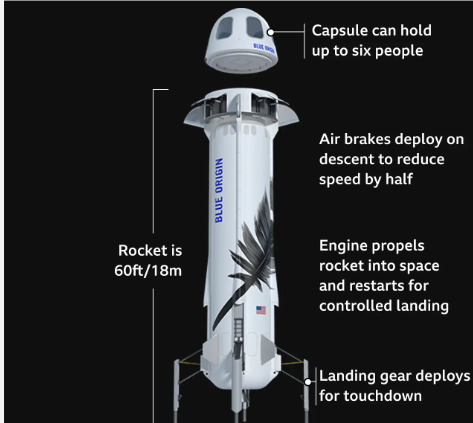NASA Delays Blue Origin’s Mars Mission to 2025
Why in the news?
NASA postponed Blue Origin’s Mars mission due to readiness concerns, pushing the launch to early 2025. The mission was originally set for October 2023.
About the Blue Origin’s Mars Mission Delayed:
- NASA has postponed Blue Origin’s Mars satellite mission, originally scheduled for October 2023, to early 2025.
- The delay is due to concerns over Blue Origin’s readiness to launch and potential challenges with removing fuel if postponed.
- NASA is exploring alternative launch opportunities, with discussions for a window no earlier than spring 2025.
New Glenn Rocket Delays:
- Blue Origin’s New Glenn rocket debut is now expected in November 2023, one month earlier than planned.
- The rocket’s second mission will use Blue Ring technology, initially intended for a later flight.
- The rocket has faced production delays and is four years overdue.
About Blue Origin:
- Founded: 2000 by Jeff Bezos, Amazon’s founder.
- Type: American aerospace manufacturer, defence contractor, and space technology company.
- Headquarters: Washington, United States.
- Notable Mission: In 2021, New Shepard completed its first crewed mission (NS-16), a sub-orbital flight lasting about 10 minutes, crossing the Karman line.About New Glenn Heavy-Lift Rocket:
- New Glenn, developed by Blue Origin, will launch NASA’s ESCAPADE mission in late 2024.
- The rocket features a reusable first stage, designed for at least 25 missions.
- Named after astronaut John Glenn, the first American to orbit Earth.
About New Shepard Spacecraft:
- Suborbital vehicle designed for scientific research and space tourism, named after astronaut Alan Shepard.
- Features a reusable rocket and crew capsule, carrying up to six passengers.
- Passengers enjoy views through the largest space windows.
- The 11-minute trip crosses the Karman line, offering weightlessness before returning with parachutes.What is the Karman Line?
- Imaginary boundary at 100 km (62 miles) above sea level, separating Earth’s atmosphere from space.
- Defined by the Fédération Aéronautique Internationale (FAI) in the 1960s.
- Some organisations set the boundary at 80 km (50 miles).
- Air is too thin for atmospheric propulsion above this altitude.
What is Space Tourism?
- Definition: Space tourism offers recreational, leisure, or business trips to space.
- Altitude: Begins at 100 km above Earth, crossing the Karman line, the boundary between Earth’s atmosphere and outer space.
- Classification: Below 100 km, vehicles are aircraft; above, they are spacecraft.
Types of Space Tourism:
- Suborbital: Passengers reach the edge of space, experiencing weightlessness for a few minutes.
- Orbital: Passengers travel into orbit, viewing Earth from space and experiencing extended weightlessness.
Recent News:
Gopi Thotakura became the first space tourist from India in a recreational space trip.





